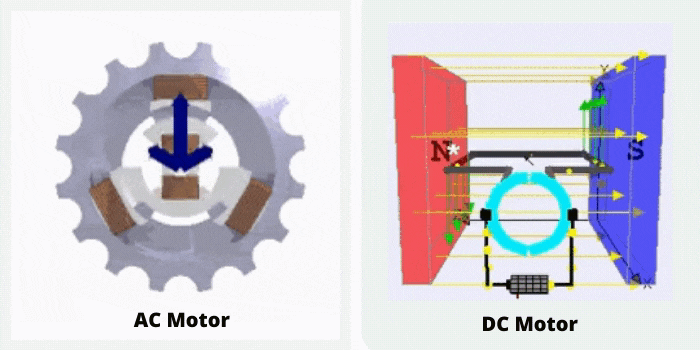WELCOME TO HERMITAGE AUTOMATION & CONTROLS
An electromechanical machine that converts the electrical energy into mechanical energy is called an electric motor. These are the devices that produce a rotational force which is processed through operative automation.
The functioning of the electric motor mainly relies on the interaction of magnetic and electric fields. The commonly used parts used in electric motors are Central motor shaft, Windings, Bearings (to reduce friction and wear), Armature (located on the rotor, the rotating part, or the stator, the stationary part), Brushes (in DC motors), Terminals, Frame and end shields.
The electric motor is mainly classified into two types. They are the AC motor and the DC motor. The AC motor takes alternating current as an input, whereas the DC motor takes direct current.

In an AC motor, there is a hoop of electromagnets organized across the outdoors (making up the stator). Which can be designed to provide a rotating magnetic field. Inside the stator, there’s an axle made of solid metal, a loop of wire, a coil, a squirrel cage made of metal bars, and interconnections. There are also some other freely rotating metal parts that can conduct electricity.
The rotor, suspended inside the magnetic field works as an electrical conductor. Because of its rotation, the magnetic field keeps constantly changing. According to Faraday’s law of electromagnetism, the magnetic field produces (or induces) an electric current inside the rotor. If the conductor is a ring or a wire, the current flows around it in a loop. If the conductor is simply a solid piece of metal, eddy currents swirl around it instead.
Either way, the induced current produces its own magnetic field and, according to another law of electromagnetism (Lenz’s law) tries to stop whatever it is that causes the rotating magnetic field—by rotating as well. AC motors offer a relatively efficient method of producing mechanical energy from a simple electrical input signal.
These motors are based on a piece of wire bent into a rectangular loop. This loop is suspended between the poles of a magnet. Through hooking up a wire and connecting it to a battery, there’s a flow of direct current (DC) through it and thus a temporary magnetic field is produced all around it. This temporary field repels the original field from the permanent magnet, causing the wire to flip over.
Normally the wire would stop at that point and then flip back again. But if an ingenious, rotating connection used (which is called a commutator), the current can be reversed every time the wire flips over. This means the wire will keep rotating in the same direction for as long as the current keeps flowing. The essence of this simple DC electric motor was conceived in the 1820s by Michael Faraday and turned into a practical invention about a decade later by William Sturgeon.
Without the primal distinction, that is the input of alternate and direct current AC and Dc motors have several other differences.

AC motors don’t require conversion of current.
| In DC motors current is converted from alternative (AC) to direct (DC) output. |
| AC motors are available in two-phase type, single-phase or three phases. |
| All DC motors are single phase. |
| In AC motors Armatures don’t rotate with the continuous rotation of magnetic fields. |
| In DC motors, the armature rotates while the magnetic field rotates. |
| Repairing is not costly. |
| Repairing is quite costly |
| Have a longer life span. |
| Have a shorter lifespan. |
| AC motors require effective starting equipment like a capacitor to start operation. |
| DC motors do not require any external help to start operation. |
| Have three input terminals. |
| Have two input terminals. |
| AC motors are late responsive when there is a change in the load. |
| DC motors are fast responsive to the change in load. |
| AC motors are applicable to the need for high speed and variable torque. |
| DC motors are applicable to the need for high torque and variable speed. |
| The speed of AC motors is simply controlled by varying the frequency of the current. |
| The speed of DC motors is controlled by varying the armature winding’s current. |
| Applied for large industrial usage. |
|
The difference between AC and DC motors is not only significant from the technical point of view. It is also essential for practical demonstrations as well. Whether an engineer or a business enthusiast, one can not choose the right one meeting his purpose without knowledge of the basic technical differences.
© Copyright 2024 Hermitage Automation and Controls